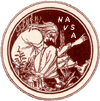We're very
pleased to announce that a new, free exhibition has opened in the Peltz
Gallery, Birkbeck's School of Arts, Central London. Touching the Book: Embossed
Literature for Blind People in the Nineteenth Century is curated by Dr Heather Tilley,
a British Academy Postdoctoral Fellow in Birkbeck’s Department of English and Humanities,
and supported by the Heritage Lottery Fund (HLF) through their Sharing
Heritage programme.
The exhibition
explores the history of embossed reading and writing practices for blind and
partially-sighted people prior to the adoption of braille in nineteenth-century
Britain and Europe. It contains important examples of nineteenth-century
embossed books, writing devices, journals, pamphlets and portraits from the
Royal National Institute of Blind People (RNIB), the Wellcome Library, and
private collections. This was a period in which a number of raised
alphabets were invented and taught in blind schools and teaching societies
throughout Europe, characterized either by their resemblance to the Roman
alphabet and legible to the eye or their use of an arbitrary, symbolic code,
such as braille.
The exhibition
traces debates between those alphabets that were best-suited to the eye vs
those best-suited to the finger and explores how nineteenth-century blind and partially
sighted people, including Thomas Rhodes Armitage (a founding member of RNIB) and
communities campaigned to have ownership of embossed writing systems. Visitors will
also be able to access further information and share responses to the
exhibition on the exhibition’s website (http://blogs.bbk.ac.uk/touchingthebook/).
Touching the
Book: Embossed Literature for Blind People in the Nineteenth Century. Peltz
Gallery, Birkbeck, 43 Gordon Square, London WC1H 0PD.
18 July to 30
October 2013. Please visit the exhibition website for more information on
opening hours.
The curator
will deliver regular tours of the exhibition.




